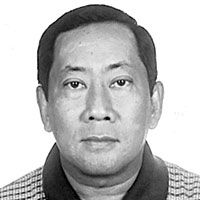65 years ago: World War II ended in Cebu!

Today Cebu celebrates a very little known historical fact that is not marked in the province because it was never written in our history books. So allow me to inform our readers that today is the 65th anniversary of the formal surrender of the Japanese occupation troops in Cebu. Among my books on World War II history that my uncle Dr. Alfredo Segura gave me is a treasure entitled “Orchids in the Mud: A Personal Account by Veterans of the 132nd Infantry Regiment from 1941-1945” edited by Robert C. Muehrcke. The 132nd Infantry Regiment was also known as the Americal Division as they were formed in New Caledonia. They fought in Guadalcanal (this is the most known about the historic battles that the Americal Division fought) Bougainville, the Philippines (specifically Samar, Leyte and Cebu) and Japan.
Little do our Filipinos know that while Japan officially surrendered to the United States on Aug. 10 when Foreign Minister Mamoru Shigemitsu and Premier Hideki Tojo accepted the joint declaration of unconditional surrender issued in Potsdam on July 26, 1944, it was only on Aug. 15 that Emperor Hirohito made the historic broadcast of his message to the Japanese people on Japan’s surrender and on this same date, US President Harry Truman made this announcement over the radio. But in Cebu, the Americal Division was still fighting the Japanese 13 days after the official surrender of Japan.
Hence, 65 years ago at 10 a.m. in Barangay Ilihan, Tabogon in northern Cebu, the Japanese Imperial Forces led by Gen. Katoaka, together with Gen. Fukue, Admiral Harada and two other Japanese generals and along with 2,667 Japanese soldiers (including Japanese women nurses from the Japanese field hospitals), stood on a grassy knoll where each Japanese officer surrendered his samurai to the regimental commanders of the Americal Division. Surrender was a humiliating act for Japanese soldiers.
After Gen. Kataoka surrendered his samurai to Gen. William H. Arnold, he barked orders to the Japanese troops in Ilihan who then stacked their weapons, mortars, grenades and ammunition in one big pile. The Japanese troops were immediately boarded on six-by-six trucks for the 50-mile journey from Ilihan to the port of Cebu City.
In the next two days, an additional 7,200 Japanese troops surrendered in Ilihan, bringing the total number of Japanese troops who surrendered to the Americal Division in Cebu to 9,867. They were all transported back to Cebu City and loaded into waiting troopships for the trip back to Japan. American intelligence reports said there were only 12,000 Japanese troops in Cebu. But the Cebuano guerrilla force led by Col. James Cushing reportedly killed some 8,000 Japanese in the entire war.
As the author noted: “The Cebu surrender was humiliating for the Japanese; it was one of the most serious emotional disturbance inflicted on them. During the long drive back to Cebu City, the American soldiers and Filipino men along the highway stared at the passing Japanese soldiers. The Filipino women screamed, threw stones and waved fists at the Japanese.”
Arriving in Cebu City, the Japanese prisoners were loaded into the waiting troopships together with the 132nd Infantry Regiment as they were ordered by Gen. Douglas MacArthur to be among the first US troops to occupy defeated Japan. The Americans never expected so many Japanese soldiers to surrender in Cebu. They did not have the logistics to incarcerate or even feed them in Cebu. Hence, they brought the Japanese soldiers on their way to Tokyo. At least the Japanese soldiers did not have to suffer a death march.
* * *
The bungled hostage incident at the Quirino Grandstand last Monday that was seen throughout the world on satellite television has made all of us armchair commanders, giving all sorts of scenarios or ideas what we would do if we were on top of the situation. Go to any coffeehouse or restaurant in Metro Cebu or Metro Manila and chances are this is the most favorite topic with everyone analyzing the incident ad nauseum.
If at all, everyone has soon forgotten that we are in crazy old Philippines where nothing works right… especially with anything connected to the government, with a very few exceptions. It just makes me wonder if Gloria Macapagal-Arroyo was still President and this thing happened (although her loyal followers would insist that this would never happen if she was in charge) the media would have pounced on her ineptitude.
But this is happening to P-Noy, the darling of the media, hence there are few stinging attacks against P-Noy, perhaps because many in the media are still giving him that 100-day honeymoon period. But what we saw in that incident was a serious lack of leadership… something that P-Noy can no longer blame on the Arroyo administration. The buck now stops with him!
* * *
For e-mail responses to this article, write to [email protected] or [email protected]. Avila’s columns can be accessed through www.philstar.com.
- Latest
- Trending
































